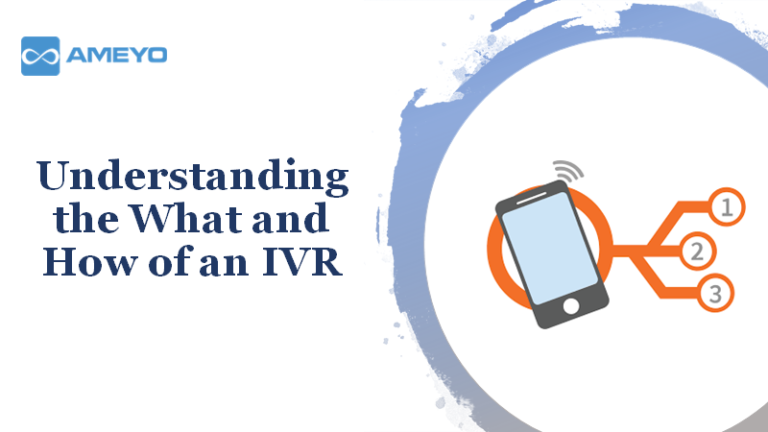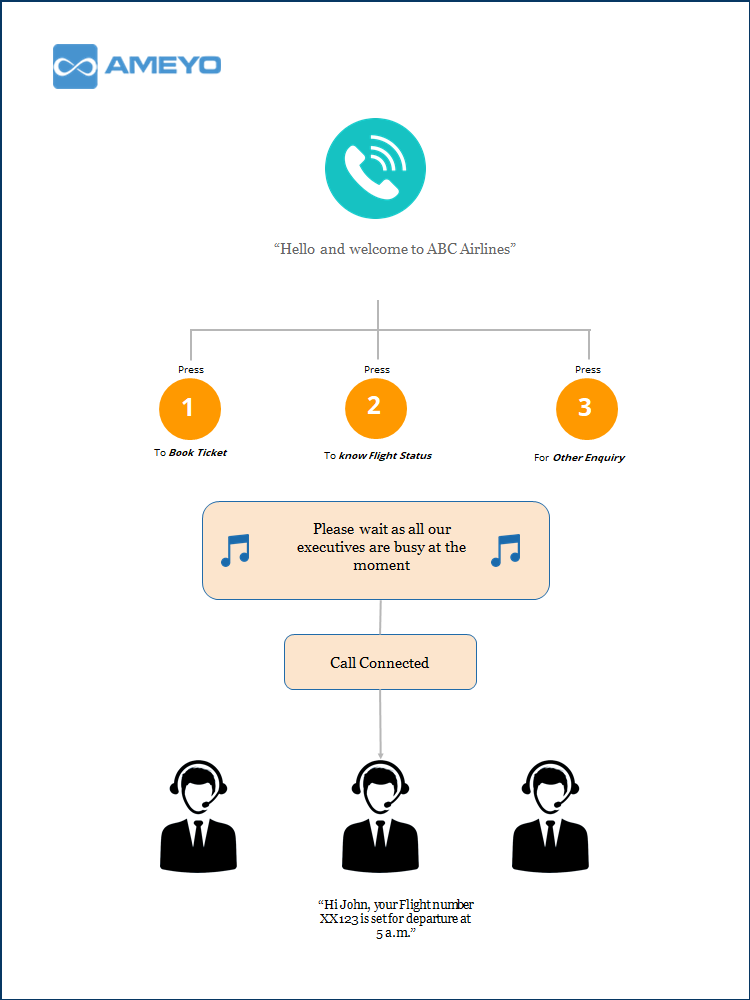We have all been on the receiving end of a call where a voice asks us to “Press 1 for support” or “Press 2 for Sales.” But how many of us actually understand what that voice is or how does it come about to help us with our queries?
What is an IVR?
Interactive voice response or IVR system is an inbound calling technology which plays out pre-recorded menu options that the caller can choose from by pressing the corresponding key on the dial pad. Based on the selection, the call is redirected to the relevant department or agent.
Evolution of IVR
Around two and three decades ago, phone calls were the primary mode of communication between the business and their customers. The customers used to call the company for any type of query – sales, support, complaint, etc and the receptionists used to attend these calls and route them to the right department.
All seemed hunky-dory till there was some goof up and the call was redirected to the wrong department. The businesses identified the gaps in this process as there was an unnecessary step being added when the callers got connected to the receptionists rather than directly to the right agent. IVR took care of this problem by directly routing the customer to the right agent. This offered multiple benefits to the companies. First, it improved customer satisfaction as well as reduced human error. At the same time, it improved operational efficiency and reduced personnel cost.
Designing Good IVR: The Best Practices
Inbound calling has evolved over the years with IVR being an important piece of the puzzle. It allows businesses to greet and interact with the customers to either help them self-serve or be directed to a suitable agent or team. Thus, it is imperative to have a good IVR designer to build the best IVR as per the business requirement.
Some of the best practices for designing good IVR are:
#1. Welcome Greeting
Greet your customers with a pleasant yet short message. An ideal welcome greeting will be the one which addresses the caller and introduces them with the company name. Additionally, the greeting needs to be to the point rather than making the caller wait to hear the menu options.
#2. Prompt Wording
The callers are carefully waiting for the menu options to not miss out on their relevant option. So, the best way is to give the option first and then use the action word. For example, “For credit card related issue, press 1” would be more useful than “Press 1 for credit card related issue” because, in case of the latter, there is a possibility that the customer misses out on the action word and has to re-listen to the menu thus, wasting their time.
#3. Waiting Song
Callers do not like to be kept on hold. However, sometimes, as a business, you do not have a choice. So, why not make their wait interesting rather than mundane. Once you have explained what is happening aka “Your call has been put on hold as we connect to our executive”, you can play some music and possibly intermittently sprinkle some relevant offers and news in the mix. It is always a good idea to let the caller know the estimated wait time. Though care must be taken to use the music/tunes which resonate with the brand and is pleasant to listen to.
#4. Multiple Levels
Have you ever had to battle it out with an IVR services? Going through the maze of options, one after the other and still not getting your problem resolved? Well, you are not the only one. One of the most important aspects of a good IVR is its flow. It is good to have multiple levels to it (minimum 2) but, at the same time, care must be taken to not overdo as the caller will lose patience and just disconnect the call. So, an example of a good IVR design is giving four menu options at level one then giving three options at level two and as you go a level deeper the IVR should be personalized according to the customer inputs. Also, provide the caller with an option to directly connect with an agent at all the levels as not everyone likes to go through the menu just to talk to an agent – make it as less cumbersome as possible.
Conclusion
An IVR as part of a call center solution has allowed the businesses to effectively manage their call center operations by optimizing the employees’ time and being cost effective at the same time. An IVR backed with automatic call distributor (ACD) streamlines the call process for the agents and the customers and thus, makes it the best choice for any small or mid-sized enterprise looking to ace at customer service.


